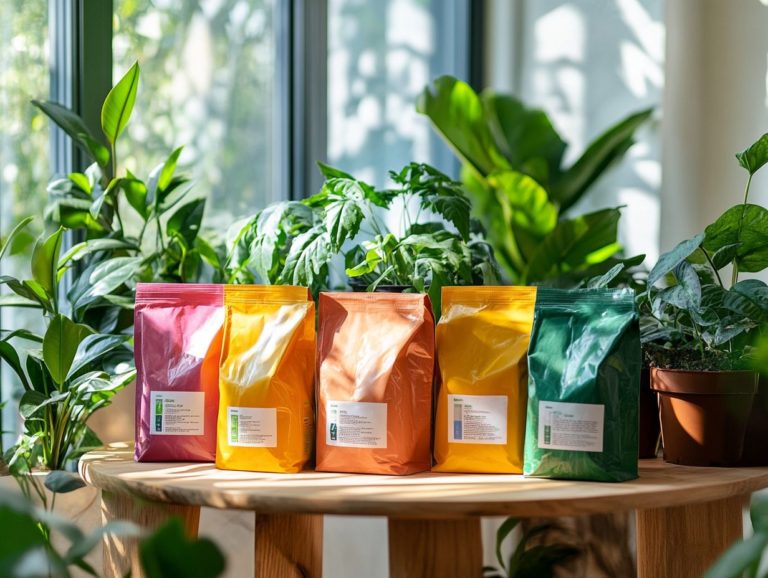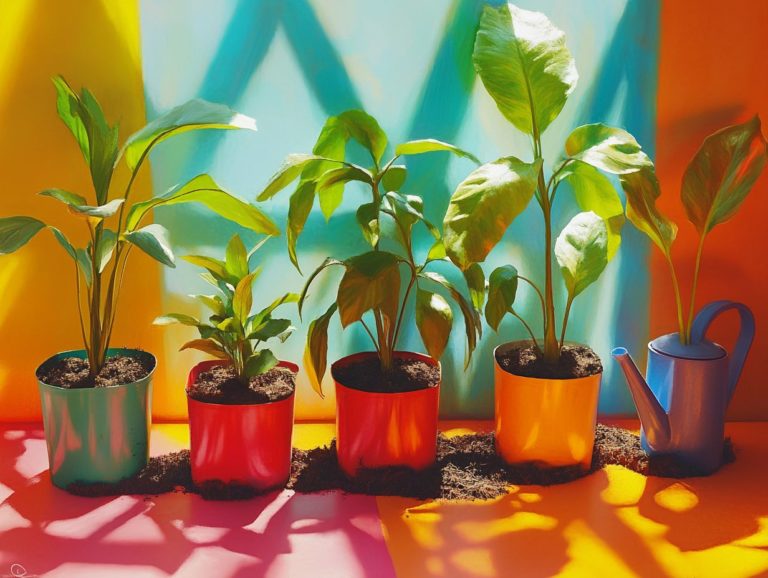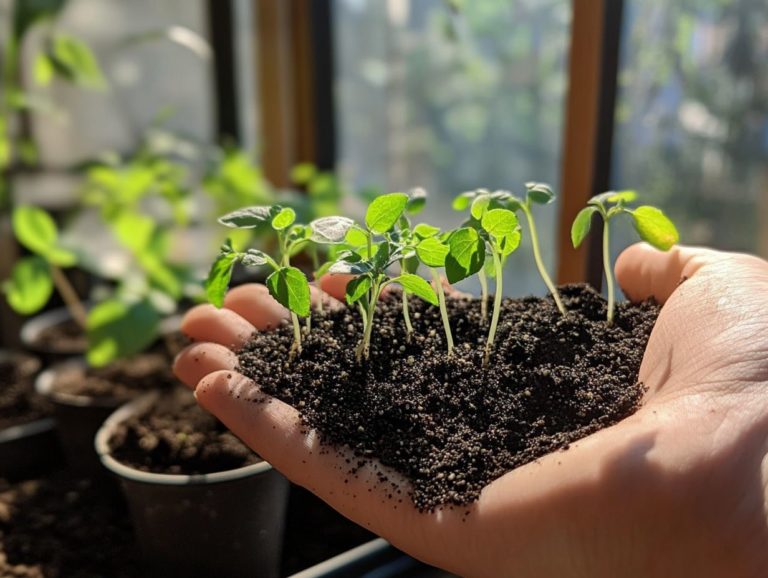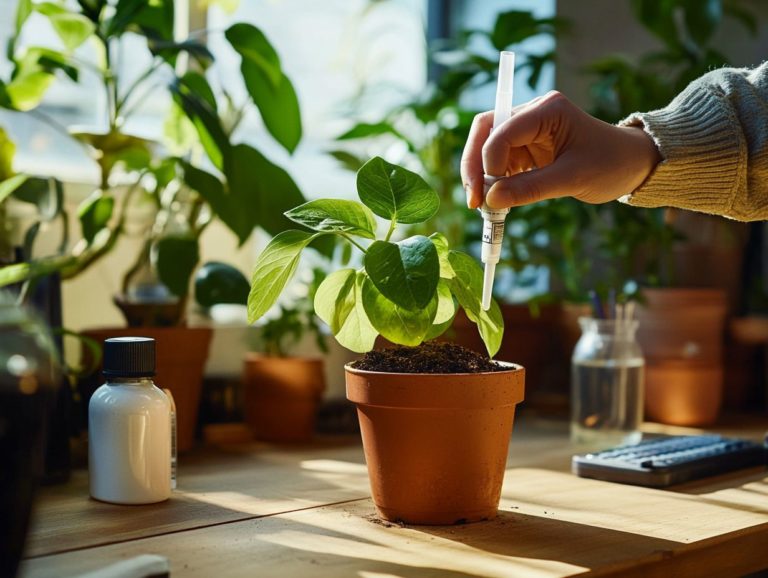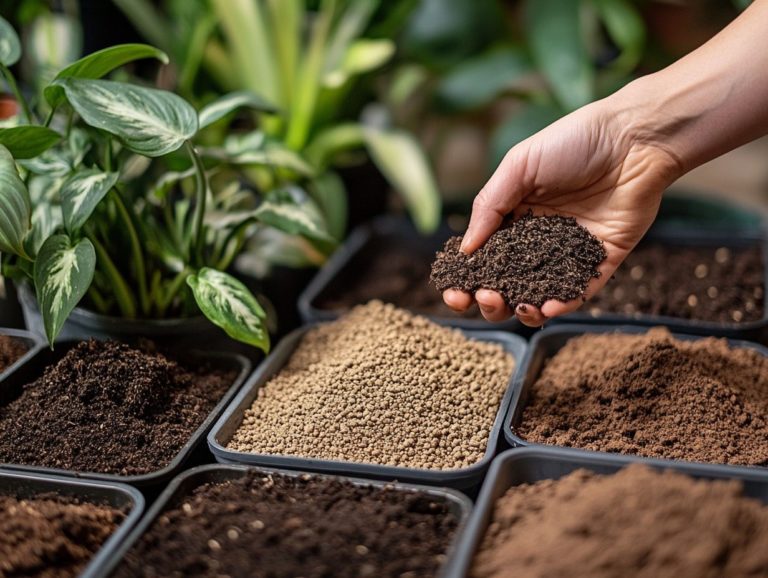How to Revive Plants from Poor Soil Quality
Soil quality serves as the cornerstone of a flourishing garden, impacting everything from the vitality of your plants to the abundance of your crop yield. Grasping the factors that influence soil quality is essential for any dedicated gardener.
Examine the indicators of compromised soil, learn how to recognize symptoms in your plants, and uncover effective strategies to rejuvenate them.
Delve into the advantages of utilizing natural fertilizers and discover insightful tips for maintaining robust soil, ensuring that your garden thrives beautifully for many seasons ahead.
Contents
- Key Takeaways:
- Understanding Soil Quality
- Signs of Poor Soil Quality
- Reviving Plants from Poor Soil Quality
- Using Natural Fertilizers
- Preventing Poor Soil Quality
- Frequently Asked Questions
- 1. What are some signs that my plants are suffering from poor soil quality?
- 2. How can I determine the specific nutrient deficiencies in my soil?
- 3. Can I revive my plants from poor soil quality without using synthetic fertilizers?
- 4. Is it possible to revive plants that have been severely affected by poor soil quality?
- 5. How long does it take to see improvements in my plants’ health after addressing poor soil quality?
- 6. Can I prevent poor soil quality from affecting my plants in the future?
Key Takeaways:
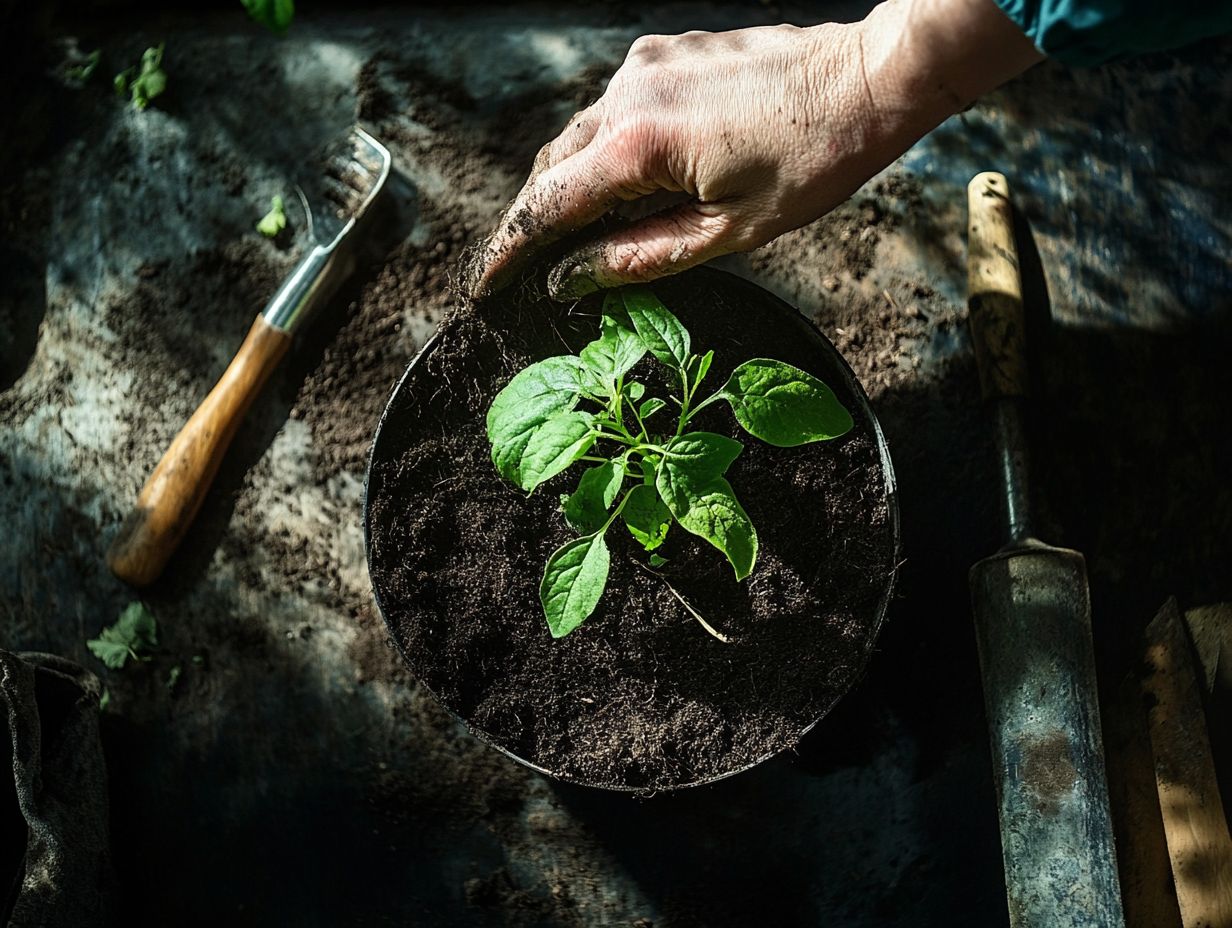
- Identify signs of poor soil quality by observing symptoms in plants, such as stunted growth and yellowing leaves.
- Use methods like composting, mulching, and crop rotation to revive plants from poor soil quality.
- Maintain healthy soil through practices like using natural fertilizers and avoiding over-tilling.
Understanding Soil Quality
Getting to know your soil is key to a thriving garden and a vibrant ecosystem. Think of soil as the bedrock for healthy growth; it influences how well plants can take in nutrients and overall plant vitality.
Factors like soil pH, compaction, and organic matter content play significant roles in determining its quality. Careful management is necessary to create optimal conditions for both crops and flowers. Understanding how these various elements interact within the living community in the soil is essential for sustainable practices, whether you’re embracing permaculture principles or following traditional agricultural methods.
Factors that Affect Soil Quality
Several factors influence your soil quality, such as pH levels, nutrient availability, and how you manage soil drainage and compaction. An ideal soil environment is crucial for helping your plants thrive by providing essential nutrients and promoting healthy root development.
Aiming for a pH range of 6 to 7 is generally beneficial for most crops, as it allows for optimal nutrient uptake. If your soil is heavily compacted, it can stifle root growth and hinder water infiltration, severely impacting plant health.
To counteract these issues, consider practices like crop rotation and minimized tillage to maintain a loose soil structure. Mulching with organic materials helps retain moisture while fostering beneficial microbial activity.
By understanding these influences, you enhance your soil conditions and support sustainable agricultural practices, ultimately leading to robust plant growth and improved yields.
Signs of Poor Soil Quality
Identifying the signs of poor soil quality is crucial for gardeners and farmers committed to achieving a successful harvest and nurturing healthy plants. Look out for common symptoms like stunted growth, yellowing leaves, and lackluster flowering; these can all signal underlying soil health issues.
Factors such as improper drainage, soil compaction, or nutrient deficiencies can significantly impact plant vitality and the overall health of your ecosystem. By recognizing these signs early on, you can take proactive measures, paving the way for a flourishing gardening environment and productive agricultural practices.
Start improving your soil today for a bountiful garden tomorrow!
Identifying Symptoms in Plants
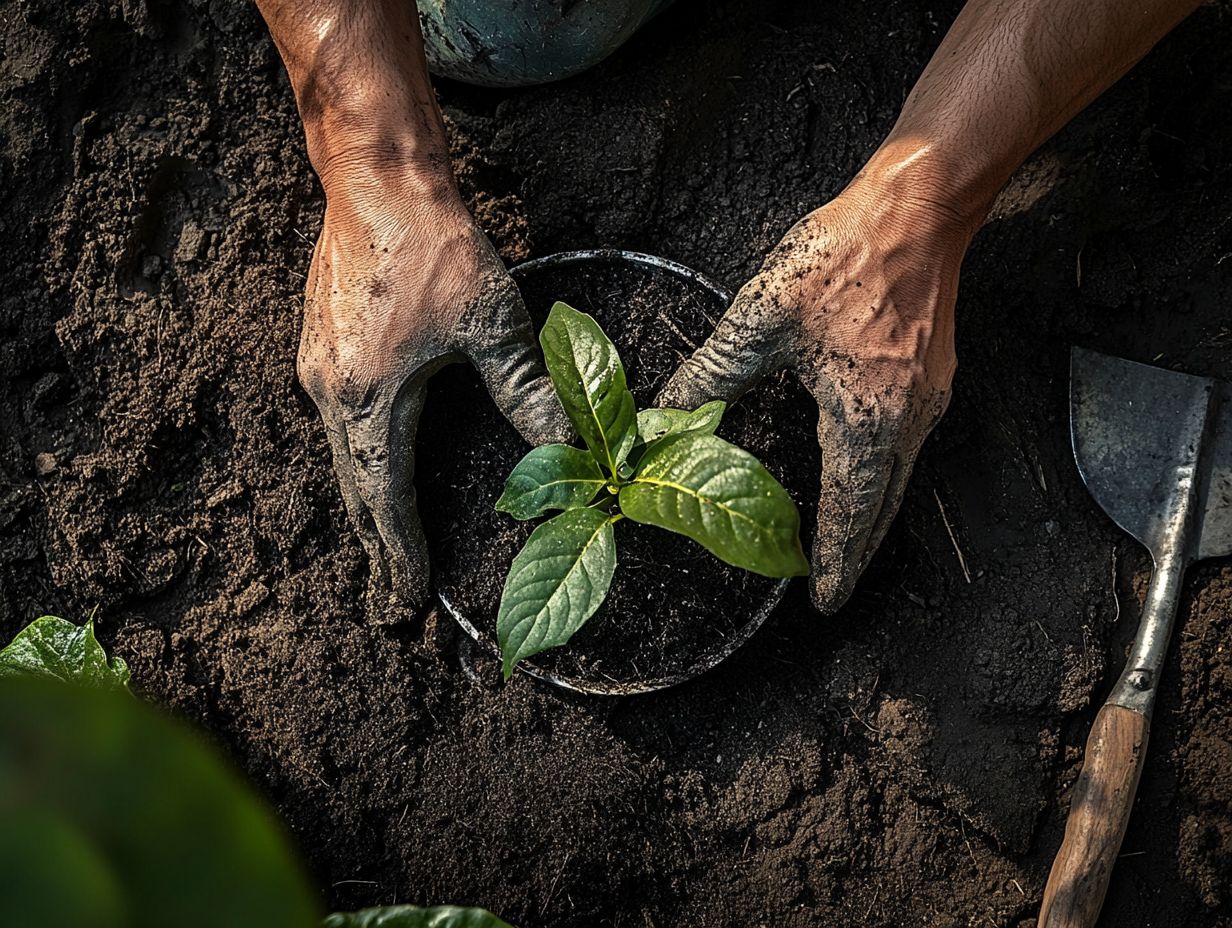
Spotting plant symptoms is key to diagnosing poor soil and fixing nutrient issues. When your plants suffer from poor soil quality, they might show signs like wilting, discoloration, and lackluster flowering.
These indicators provide insights into the underlying soil problems you need to address. Keep a close eye on moisture levels and the overall health of your plants, as these elements are linked to soil quality. Recognizing these symptoms early allows you to take corrective measures to restore vitality and foster a thriving ecosystem.
Nutrient deficiencies show distinct symptoms. For instance, yellow leaves often mean a lack of nitrogen, while a lack of potassium may lead to leaf scorching and browning at the edges. Phosphorus deficiency can stunt growth and result in dark green or purplish foliage. An imbalance in moisture can further worsen these symptoms, as too much or too little water can hinder nutrient uptake and impact root health.
Carefully observing these changes helps you intervene early for better plant care, enhancing soil health and productivity in your garden or agricultural setting.
Reviving Plants from Poor Soil Quality
To revive plants from poor soil, understand how to improve soil conditions and restore plant vitality. You might consider strategies such as adding compost, rotating crops, or employing organic fertilizers to elevate nutrient levels.
Integrating practices like cover cropping and incorporating legumes can effectively fix nitrogen in the soil, enriching its fertility. Embracing sustainable management techniques is crucial for revitalizing struggling plants and nurturing a healthier gardening ecosystem that flourishes over time.
Methods for Improving Soil Quality
There are several effective methods to enhance soil quality, leading to healthier plants and increased productivity in your garden.
Start by setting up a compost bin to collect kitchen scraps, yard waste, and other organic materials. This will allow them to decompose into nutrient-rich compost, improving your soil’s structure and moisture retention.
Consider incorporating green manure, like clover or vetch. This adds valuable organic matter, helps prevent erosion, and suppresses weeds.
Integrating legumes into your garden is especially advantageous; these remarkable plants can fix atmospheric nitrogen into the soil, naturally boosting its fertility.
By combining these techniques, you create a robust foundation for nurturing vibrant, resilient plants while reducing your reliance on chemical fertilizers.
Using Natural Fertilizers
Using natural fertilizers greatly benefits your garden. It improves soil health and reduces environmental harm. Unlike synthetic options, natural choices like compost and organic amendments promote long-term soil fertility, nourishing your plants without harmful chemicals.
By employing effective application techniques, you can maximize these advantages, fostering a thriving ecosystem where both soil and plants flourish sustainably.
Start applying these tips now to watch your garden thrive!
Benefits and Application Techniques

Natural fertilizers offer an array of benefits that elevate soil health and plant vitality. They are critical in the realm of sustainable gardening. Their slow-release nature ensures a consistent nutrient supply over time. This minimizes the risk of nutrient leaching, which is the loss of nutrients from the soil, while promoting robust soil microbial activity, or the tiny organisms in the soil that help plants grow.
By mastering application techniques whether through top dressing or incorporation into the soil you can significantly enhance the effectiveness of these organic amendments. This allows your plants to thrive in a nurturing ecosystem.
These amendments replenish essential nutrients and improve soil structure. This enhancement leads to better aeration and water retention. By nurturing a diverse microbial community, natural fertilizers facilitate the breakdown of organic matter, releasing additional nutrients that support healthy plant growth.
Using these fertilizers diminishes the risk of chemical runoff, safeguarding nearby waterways and fostering a balanced ecosystem. Exploring application methods such as liquid feeds or granular options allows you to tailor your approach according to your plants needs and soil conditions.
This optimization of growth potential ensures a bountiful harvest, reflecting the true beauty of sustainable gardening.
Preventing Poor Soil Quality
Preventing poor soil quality is essential for cultivating a thriving garden and embracing sustainable agricultural practices. Don’t wait! Here are simple steps you can take now:
- Regularly testing soil pH
- Incorporating organic matter such as compost and mulch
- Rotating your crops to prevent compaction and nutrient depletion
Emphasizing sustainability in your gardening practices is the cornerstone of long-term success.
Tips for Maintaining Healthy Soil
Healthy soil is the secret ingredient for a thriving garden! Here s how you can keep it in top shape:
Maintaining healthy soil is crucial for cultivating a flourishing garden. Regularly incorporating compost and organic matter not only nourishes your soil but also nurtures a vibrant ecosystem of beneficial organisms. For those interested in indoor gardening, exploring the top indoor plants that thrive in poor soil can be a great addition to your routine. Engaging in crop rotation, applying mulch, and monitoring soil moisture levels are essential steps to preserve soil health.
Adding cover crops during the off-season is another wise strategy. These crops help prevent erosion and improve soil structure when tilled in. Using natural fertilizers, such as bone meal or fish emulsion, can significantly enhance nutrient density while remaining environmentally friendly.
Minimizing soil disturbance through no-till gardening allows essential microbial communities to flourish. This creates a robust environment for your plants. By observing your local ecosystem and adjusting your practices accordingly, you can support sustainable soil health over time.
This leads to vigorous plant growth and a resilient garden that thrives in harmony with nature.
Watch this video to learn more about maintaining soil health for a thriving garden!
Frequently Asked Questions
1. What are some signs that my plants are suffering from poor soil quality?

Some common signs of poor soil quality include stunted growth, yellowing leaves, wilting, and an overall unhealthy appearance of the plant.
2. How can I determine the specific nutrient deficiencies in my soil?
Test your soil or ask a gardening expert to check the nutrient levels.
3. Can I revive my plants from poor soil quality without using synthetic fertilizers?
Yes, there are several organic methods for improving soil quality, such as adding compost, mulching, and using natural fertilizers like fish emulsion or manure.
4. Is it possible to revive plants that have been severely affected by poor soil quality?
In most cases, yes. By addressing the underlying issues of poor soil quality and providing proper care, plants can recover and thrive again.
5. How long does it take to see improvements in my plants’ health after addressing poor soil quality?
The time it takes can vary. However, you should notice improvements within a few weeks to a month.
6. Can I prevent poor soil quality from affecting my plants in the future?
You can definitely prevent poor soil quality.
Regularly test and amend your soil.
Use organic fertilizers and follow good gardening habits, such as crop rotation and proper watering.

